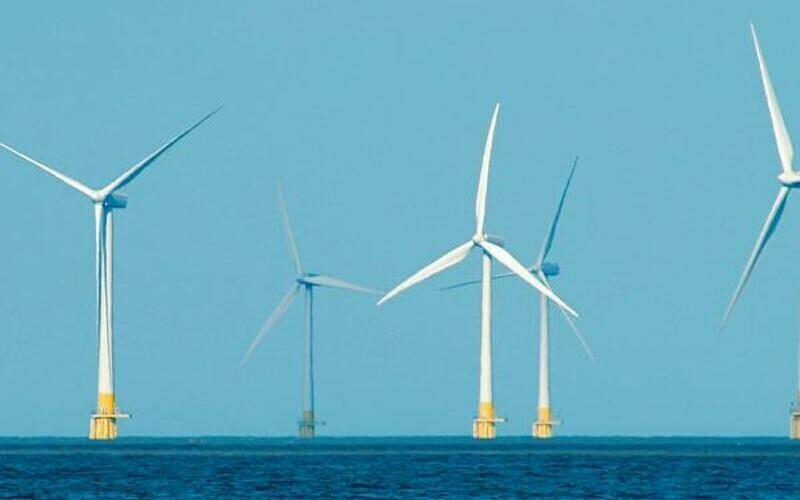With president-elect Donald Trump’s first day in office less than 10 weeks away, offshore wind advocates are trying to assemble a strategy that will best address Trump’s campaign promise to kill wind energy projects.
An online panel hosted Friday by the industry group Oceantic tried to peer into that uncertain future. Experts acknowledged Trump’s well-known personal hostility to wind power, but also suggested potential economic and industrial growth can boost the industry’s chances of survival under the incoming administration.
“I would expect to see some executive orders on day one (Inauguration Day Jan. 20) or in the following weeks,” said Elizabeth Craddock, an attorney with law firm Holland & Knight. Republican advisors have been laying groundwork for Trump policies for weeks before the election, so early days will give an immediate signal, she said.
The Department of Interior is central to offshore energy decision making, and Trump’s proposed selection of North Dakota Gov. Doug Burgum as Interior secretary could be confirmed by the Senate and in place by March.
The political debate over offshore wind power has at times seemed to pit wind development against offshore oil and gas. But that distinction is misplaced, contends Jon Hrobsky, vice president of strategic communications at Washington D.C. law firm Brownstein Hyatt Farber Schreck, who advocates on behalf of offshore wind.
“One of the first things we need to think about is they’re not competitive…we need it all,” said Hrobsky. “We need to be able to speak to ‘all of the above.’”
North Dakota, Gov. Burgum’s home state, generates about 4.3 gigawatts of power from turbines on land, about 35% of its power, Hrobsky noted. Burgum has a track record as a highly successful tech entrepreneur “and I think his experience as an executive really helps there,” said Hrobsky.
But “we have no clue” how Trump will go on renewable energy, Hrobsky added, because he is “a committee of one on a lot of these issues.”
East Coast governors have dedicated a lot of political power and state spending to develop offshore wind for their states, said Craddock. “Governors really don’t like other people telling them what to do in their states,” and could bring some influence on Burgum that way, she said.
But like Hrobsky, Craddock said “we don’t know.” Trump explicitly promised to end projects during a May campaign rally on the beach at Wildwood, N.J., and could try to fulfill that by withholding new federal leases or stop ongoing projects, she said.
During the first Trump administration in 2017 the federal Bureau of Ocean Energy Management (BOEM) moved forward on wind leases, and former Interior Secretary Ryan Zinke at the time was a booster of the “all of the above” approach.
But in the last weeks of 2020, the Trump administration turned sharply against wind power, attempting to kill permitting for the Vineyard Wind project off southern New England. In the early weeks of 2021, the new Biden administration immediately moved the permits forward.
“At the end of the day, we need to be able to move forward regardless of the political headwinds or tailwinds,” said Craddock. “The first day executive order is going to tell us a lot about what our boundaries are going to look like.”
A president can do a lot about offshore energy permitting, but “that discretion is not absolute,” said Josh Kaplowitz, an attorney with law firm Locke Lord, who focuses on offshore wind and other forms of renewable energy.
Over the years Congress has passed reforms that set timelines for permitting energy projects for example so “there are guardrails that do exist,” said Kaplowitz.
BOEM has issued permits for 10 projects and routinized its process, so much so that some wind power developers complain the requirements for environmental review are excessive, said Kaplowitz. It shows the agency has done a solid job documenting its work, he added.
“These permits do rest on a strong legal and factual foundation,” and the agency would have a heavy burden to justify suddenly reversing its findings, he said.
Offshore wind critics have attacked the process on several fronts, including potential effects on the highly endangered North Atlantic right whale. That critique is similar to environmental groups’ pressure to protect the likewise endangered Rice’s whale in the Gulf of Mexico.
The offshore wind advocates suggested their industry and oil and gas could find some common ground on those kind of regulatory hurdles.
In the coming weeks wind developers will need to protect their own projects. Meanwhile supply chain companies should make the case for their U.S. workers’ jobs and economic benefits to Congress and the coming administration, “to be the face of this, to show where the jobs are and where the jobs matter,” said Hrobsky.




